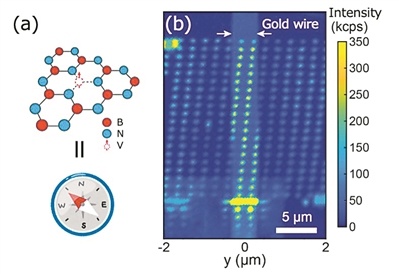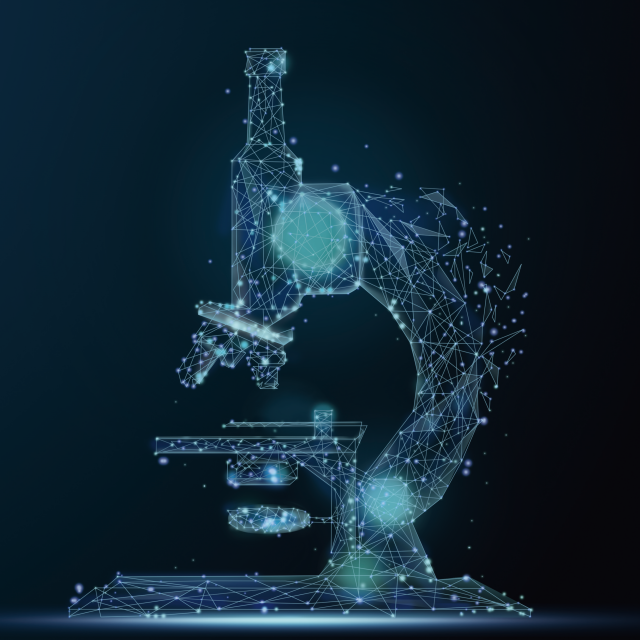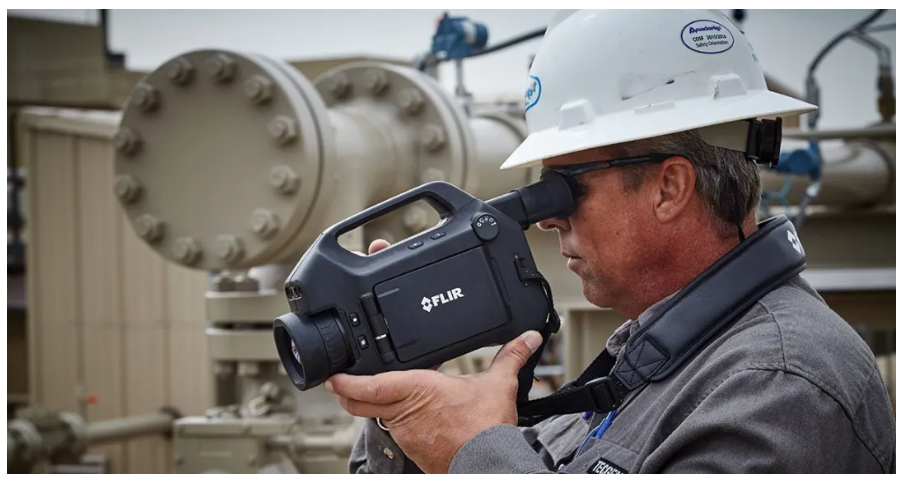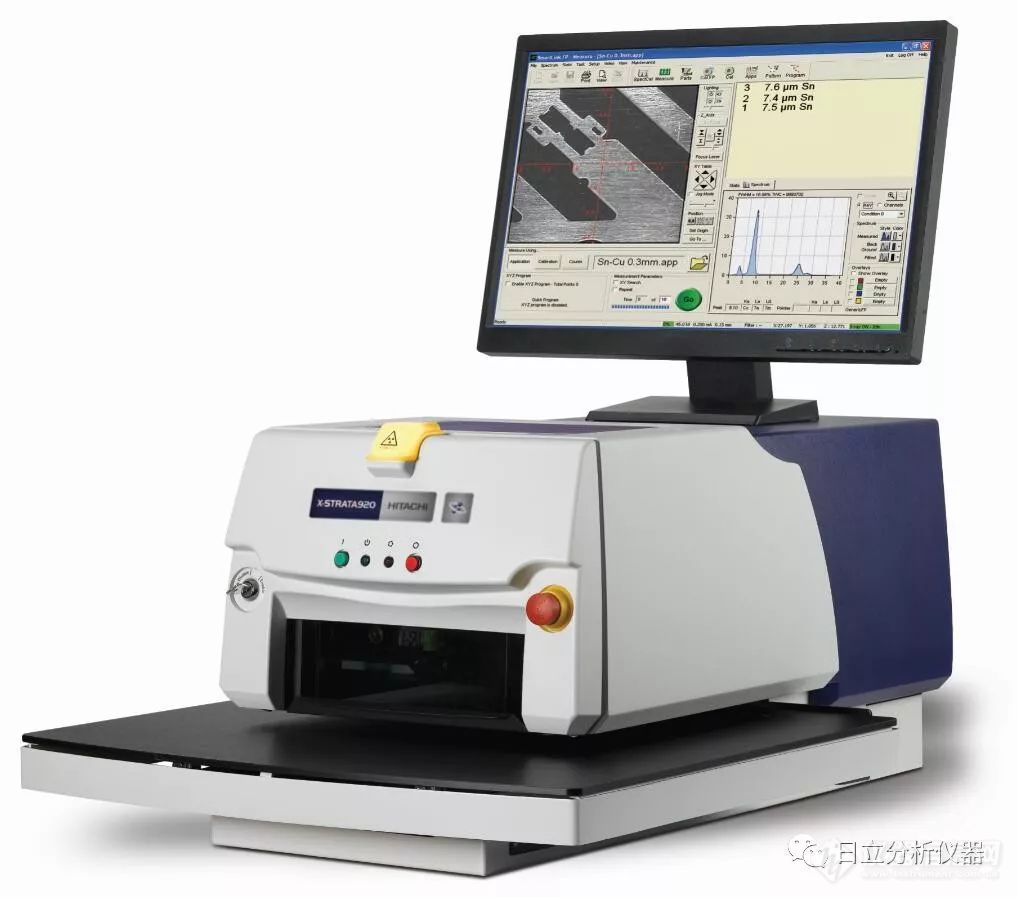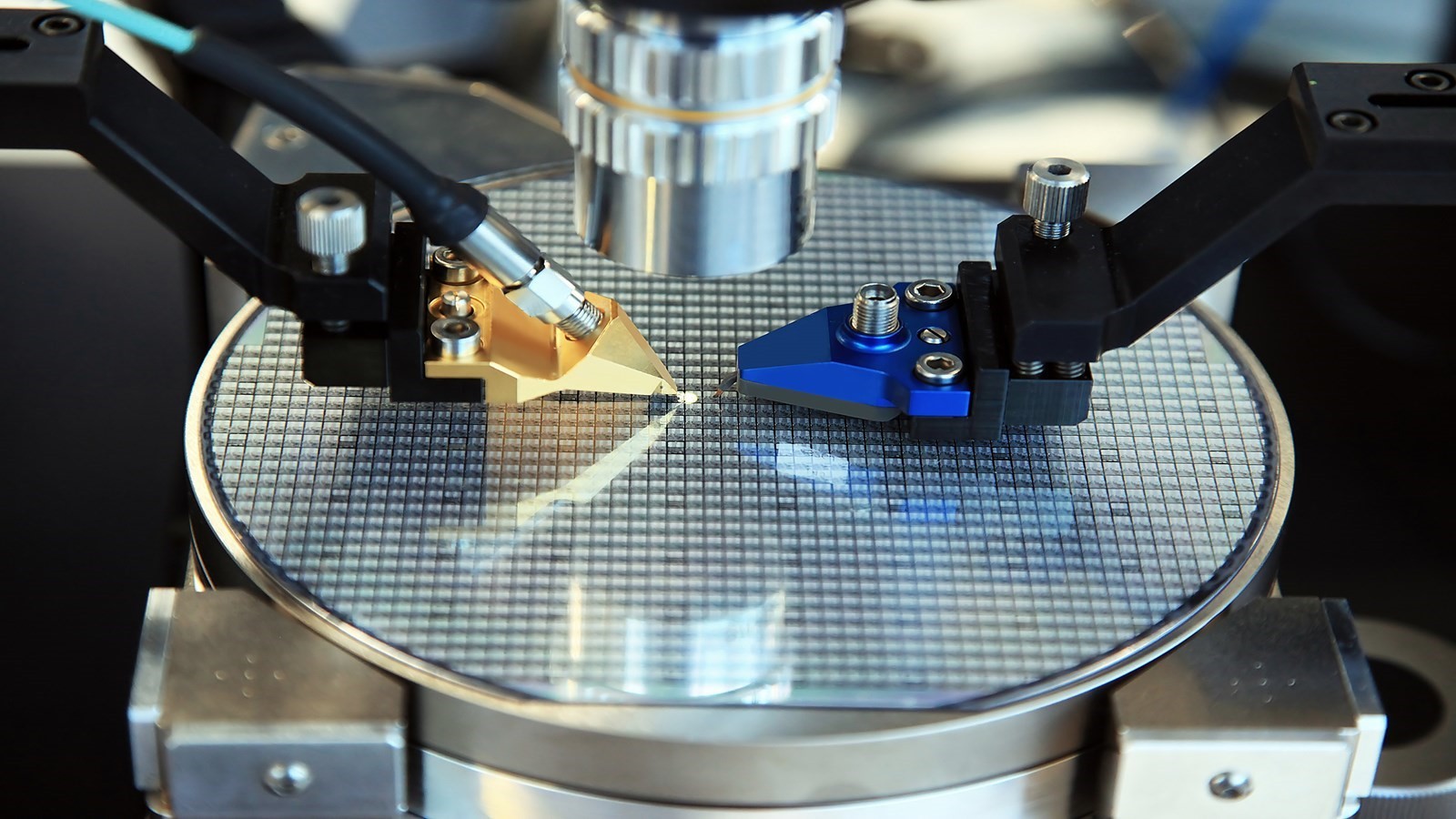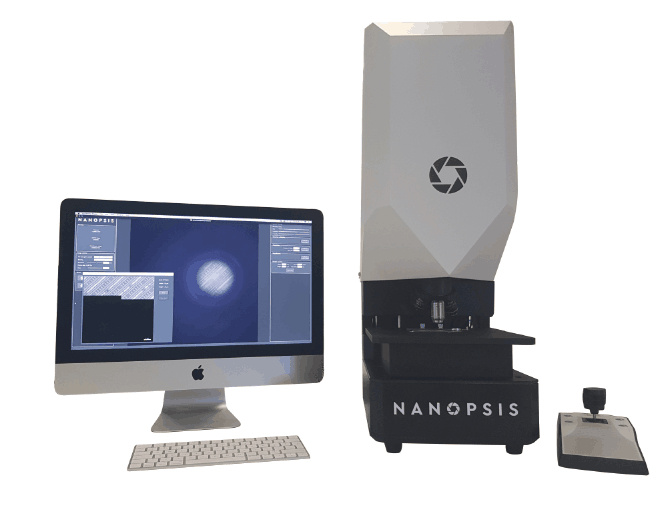专家小谈|常用商业化超高分辨率显微镜概览(含图)
p style=" margin-top: 10px margin-bottom: 10px line-height: 1.5em text-indent: 2em " 使用显微镜,是为了实现人力所不能及的事情。显微镜一直是生物学家从事研究工作、探寻生命奥秘必不可少的利器。为了看到更精细的生命体精细结构,研究人员对显微镜技术更高分辨率的追求从未停止。 /p p style=" margin-top: 10px margin-bottom: 10px line-height: 1.5em text-indent: 2em " 早在19世纪初,John Herschel和George Airy分别提出,点光源通过理想透镜成像时,由于衍射而在焦点处形成的光斑。这种中央明亮、周围有一组较弱的明暗相间同心环状条纹的光斑,在第一暗环以内的的中央亮斑称作艾里斑,在数学中通常用点扩散函数PSF来表示 sup [1,2] /sup 。如图所示,当两点之间的距离大于埃里斑时,才能被解析出来,可以被解析的最小距离即为分辨率。 /p p style=" margin-top: 10px margin-bottom: 10px line-height: 1.5em text-indent: 2em " 德国物理学家Ernst Abbe在此基础上提出了分辨率的解析方程Angular Resolusion,可以用来描述人眼、相机、物镜等一系列成像设备的解析能力。他将这个假说应用的物镜上第一次提出了物镜的数值孔径(NA)的概念,并在1873年提出了决定物镜分辨率的方程 sup [3] /sup 。1896年,Lord Rayleigh对这个方程做了z轴的测算 sup [4] /sup 。具体如下: /p p style=" margin-top: 10px margin-bottom: 10px line-height: 1.5em text-indent: 2em " 其中d代表分辨率,表示可以解析的两点之间最小距离;λ代表入射光波长;NA即为数值孔径,由光的最大入射夹角决定。 /p p style=" margin-top: 10px margin-bottom: 10px line-height: 1.5em text-indent: 0em text-align: center " & nbsp img style=" max-width: 100% max-height: 100% width: 450px height: 314px " src=" https://img1.17img.cn/17img/images/202007/uepic/f54bf352-44d0-429f-b2b1-df42d4702fbf.jpg" title=" 图片1.png" alt=" 图片1.png" width=" 450" height=" 314" border=" 0" vspace=" 0" / /p p style=" margin-top: 10px margin-bottom: 10px line-height: 1.5em text-indent: 0em text-align: center " 图1:(a)埃里斑示意图,中央明亮、周围有一组较弱的明暗相间同心环状条纹的光斑。(b)可以解析的两个相邻埃里斑。(c)无法解析的两个相邻埃里斑。(图片来源于网络) /p p style=" margin-top: 10px margin-bottom: 10px line-height: 1.5em text-indent: 2em " 因此,20世纪的显微镜生产商们主要通过提高物镜的数值孔径来提高物镜的分辨率。 span style=" text-indent: 2em " 但是,由于衍射的存在数值孔径的提高是有极限的,衍射极限限制了系统的分辨率。 /span /p p style=" margin-top: 10px margin-bottom: 10px line-height: 1.5em text-indent: 2em " span style=" color: rgb(192, 0, 0) " strong 极限是用来打破的 /strong /span /p p style=" margin-top: 10px margin-bottom: 10px line-height: 1.5em text-indent: 2em " 几十年以来,研究者们采取了不同策略进一步了提高显微镜的分辨率。 有一些尽在衍射极限之外适度地提高了分辨率,比如共聚焦成像时采用更小的针孔大小、借助于反卷积或者神经网络算法 sup [5,6] /sup 、4Pi显微镜 sup [7] /sup 和结构光照明显微镜技术 sup [8] /sup 等等,这些技术不需要特殊制样,分辨率提升一般在2倍左右(100-150nm)。除此之外,还有另外两种被称为Nanoscopy的超高显微技术:一类是采用受激辐射或其他方法对发射光PSF进行擦除的确定性超高分辨率显微镜,如STED、GSD、RESOLFT和SSIM等 sup [9,10] /sup ;另一类是基于荧光分子随机定位的超分辨技术,使得相邻的荧光分子在不同时间发光,从而将它们分辨开来,如STORM、PALM、PAINT、dSTORM等等 sup [11,12] /sup 。这两类技术都可以将显微镜的成像分辨率推进到100nm以内,相较于荧光分子定位技术而言,第一类技术对生物制样要求相对容易,因此在常规生物实验室研究中应用更加广泛。 /p p style=" margin-top: 10px margin-bottom: 10px line-height: 1.5em text-indent: 2em " span style=" color: rgb(192, 0, 0) " strong 常用商业化超高显微技术 /strong /span /p p style=" margin-top: 10px margin-bottom: 10px line-height: 1.5em text-indent: 2em " 随着技术的发展,硬件和软件都更趋于稳定,超高分辨显微技术也有了越来越多的商业化产品。由于成像技术和成像需求的多元化,根据成像需求和样品特点来选择合适的超高分辨率显微镜技术对用户来说相当重要。在此,我们针对几类常见超高分辨显微镜技术在生命科学领域中应用做简要介绍。 /p p style=" margin-top: 10px margin-bottom: 10px line-height: 1.5em text-indent: 2em " strong (1)反卷积计算技术 /strong /p p style=" margin-top: 10px margin-bottom: 10px line-height: 1.5em text-indent: 2em " 这是一类最早走进生物学应用的超高分辨率技术,它主要基于图像计算。只要有光线传播就存在卷积现象,在光学成像过程中也是如此。一般来说显微镜成像中的信号模糊主要受卷积和噪音两方面因素影响。因此,采用适合的采样方式和去卷积算法可以很大程度上提高图像的分辨率和信噪比。这类技术对物镜的品质要求较高,需要物镜的PSF参数达到可以计算的标准才能有比较好的效果;另外,传统的去卷积技术也对成像的像素点密度有所要求,需要参考Nyquist定律来判断采样频率是否达到需求。 /p p style=" margin-top: 10px margin-bottom: 10px line-height: 1.5em text-indent: 0em text-align: center " & nbsp /p p style=" text-align: center" img style=" max-width:100% max-height:100% " src=" https://img1.17img.cn/17img/images/202007/uepic/f50ef5b2-747b-4812-a935-f525916de89f.jpg" title=" 图2.png" alt=" 图2.png" / /p p style=" margin-top: 10px margin-bottom: 10px line-height: 1.5em text-indent: 0em text-align: center " 图2.& nbsp (a)PSF在成像过程中的影响。(b)荧光显微镜图片去卷积前(右)和后(左) /p p style=" margin-top: 10px margin-bottom: 10px line-height: 1.5em text-indent: 0em text-align: center " (图像来源于网站) /p p style=" margin-top: 10px margin-bottom: 10px line-height: 1.5em text-indent: 2em " 目前市场上此类产品主要分为两类,一类是反卷积显微镜,另一类是单独的反卷积软件。一般来说,反卷积显微镜是基于宽场荧光显微镜设计的自动化成像系统,综合考虑了特定物镜的PSF、采样频率和相对应的反卷积算法,因此成像速度快、操作简单。而单独的去卷积软件需要用户了解该图像处理方法对样品、物镜和采样方式的要求,并匹配合适的分析方法。虽然操作有一定的门槛,但是这类软件针对的显微镜种类较多,从荧光显微镜到共聚焦乃至超高分辨率显微镜都有相应的算法,一般成像技术都可以通过去卷积算法进一步提高分辨率。 /p p style=" margin-top: 10px margin-bottom: 10px line-height: 1.5em text-indent: 2em " strong (2)基于共聚焦的超高技术 /strong /p p style=" margin-top: 10px margin-bottom: 10px line-height: 1.5em text-indent: 2em " 针孔(Phinhole)是激光共聚焦显微镜成像中的必要组件,在共聚焦成像中通过针孔来去掉焦平面以外的杂散光,从而实现层扫的效果。而针孔的大小除了影响层扫的厚度之外还影响成像的分辨率。当针孔缩小时,层扫厚度变薄、xy和z轴分辨率提高(PSF减小)、可检测的信号减少。我们可以使用较小的针孔大小(0.5AU)和去卷积技术结合得到分辨率和信噪比较高的图像。 span style=" text-align: center text-indent: 0em " & nbsp /span /p p style=" text-align: center" img style=" max-width: 100% max-height: 100% width: 550px height: 473px " src=" https://img1.17img.cn/17img/images/202007/uepic/6ba2022e-1146-4803-bb6b-fd8a05e3dd23.jpg" title=" 图片2.png" alt=" 图片2.png" width=" 550" height=" 473" border=" 0" vspace=" 0" / /p p style=" margin-top: 10px margin-bottom: 10px line-height: 1.5em text-indent: 0em text-align: center " 图3.& nbsp 共聚焦侧向分辨率与针孔大小的关系。在针孔小于1AU的情况下,针孔越小分辨率越高。(图片来源于网络) /p p style=" margin-top: 10px margin-bottom: 10px line-height: 1.5em text-indent: 2em " 由于上述方法在实际使用时会大大降低光效率,无法对较弱信号实现超高分辨率成像。近几年来,基于这种分辨率提高方式也有两类商业化产品推出,一是基于阵列检测器的Airyscan技术,它利用带有32 个同心排列的检测元件一次性采集1.25 AU的信号。单个检测元件可以检测0.2AU左右的信号,在针孔变小和点结构光运算的基础上,成像分辨率和灵敏度都得到了明显地提高。另一种是基于转盘共聚焦的超高成像技术,以yokogawa的为例,这种技术并通过光学变倍达到针孔信号扩束的效果并采用点结构光运算,提高分辨率。 /p p style=" text-align: center" img style=" max-width:100% max-height:100% " src=" https://img1.17img.cn/17img/images/202007/uepic/b38871c2-288c-4a52-9dfb-268d2f546adf.jpg" title=" 图片3.png" alt=" 图片3.png" / /p p br/ /p p style=" margin-top: 10px margin-bottom: 10px line-height: 1.5em text-align: center text-indent: 0em " 图4. (a)Airyscan检测器示意图[13]。(b)Sora转盘共聚焦示意图。 br/ (右图来源于网络) /p p style=" margin-top: 10px margin-bottom: 10px line-height: 1.5em text-indent: 2em " 这两种技术总体上来说分辨率相当,在120-150nm左右,去卷积处理后都可以进一步改善图像分辨率和信噪比;相较而言,Airyscan对弱信号更加灵敏,而基于Sora等技术的成像速度更快。 /p p style=" margin-top: 10px margin-bottom: 10px line-height: 1.5em text-indent: 2em " strong (3)基于结构光照明的超高技术 /strong /p p style=" margin-top: 10px margin-bottom: 10px line-height: 1.5em text-indent: 2em " 1995年,早在SIM的概念提出之前,Guerra便通过光栅旋转的方式得到了更高分辨率的图像,随后的研究发现通过类似照明手段和傅立叶变换的方法可以收集到观察区域外的频域信号从而能够重构出更高分辨率的图像。这种光学成像技术近年来发展迅速,目前已经有更多的照明方式和相应算法出现,而这种成像方式也融合到多种成像技术中用以提高成像的效果,可以提高荧光显微镜、全内反射显微镜、光片显微镜等成像技术的分辨率。 span style=" text-align: center text-indent: 0em " & nbsp /span /p p style=" text-align: center" img style=" max-width: 100% max-height: 100% width: 550px height: 257px " src=" https://img1.17img.cn/17img/images/202007/uepic/7109771f-658b-4344-8c6b-c0cd3f924fea.jpg" title=" 图片4.png" alt=" 图片4.png" width=" 550" height=" 257" border=" 0" vspace=" 0" / /p p style=" margin-top: 10px margin-bottom: 10px line-height: 1.5em text-indent: 0em text-align: center " 图5.& nbsp 光栅式结构光照明荧光显微镜技术重构示意图。(a)宽场荧光显微镜成像结果。(b)结构光照明成像结果,箭头部分指的是高频信息。(c)经过获取不同格栅位置的图像计算得出七个不同组分的高频信息。(d)将七组分拟合得到包含高频信息的高分辨率图像。(图像来源于网络) /p p style=" margin-top: 10px margin-bottom: 10px line-height: 1.5em text-indent: 2em " 目前商用的SIM技术主要集中在荧光显微镜和全内反射显微镜,分辨率为100-120nm之间,对样品折射率和样品厚度有一定的要求,广泛应用于活细胞成像中。 /p p style=" margin-top: 10px margin-bottom: 10px line-height: 1.5em text-indent: 2em " strong (4)基于受激辐射损耗的超高技术 /strong /p p style=" margin-top: 10px margin-bottom: 10px line-height: 1.5em text-indent: 2em " 除了前面提到的缩小针孔之外,使用受激辐射的方法将埃里斑变小也可以进一步地提高分辨率,这种方法也被称为受激发射损耗(STimulated Emission Depletion,STED)显微镜。受激辐射,即处于激发态的发光原子在恰好是原子两能级能量差的外来辐射场的作用下,发出与外来光子的频率、位相、传播方向以及偏振状态全相同的光子的现象。由于这种现象造成原荧光发射波段信号被擦除的效果,甜甜圈形状的同心圆受激辐射光使得荧光光斑变小,从而进一步得提高了分辨率。 /p p style=" text-align: center" img style=" max-width: 100% max-height: 100% width: 550px height: 179px " src=" https://img1.17img.cn/17img/images/202007/uepic/a73facd6-7365-4a21-850a-29e376cf2f9a.jpg" title=" 图片5.png" alt=" 图片5.png" width=" 550" height=" 179" border=" 0" vspace=" 0" / span style=" text-indent: 0em " & nbsp /span /p p style=" margin-top: 10px margin-bottom: 10px line-height: 1.5em text-indent: 0em text-align: center " 图6.& nbsp STED成像方式示意图。(a)STED成像中用于激发光的光斑。(b)STED成像中用于受激辐射的光斑。(c)实际成像过程中的光斑。(图像来源于网络) /p p style=" margin-top: 10px margin-bottom: 10px line-height: 1.5em text-indent: 2em " 十几年以来,这种成像技术发展迅速,cwSTED、gated STED、3d STED、MINFLUX等技术的出现,使得STED成像光漂白更小、3D成像效果更好也更加易用。相较于Airyscan和Sora技术,STED样品的优化对于成像效果影响明显。结合去卷积算法,一般生物组织样品的分辨率可以达到40-60nm。但是,STED样品经常需要对荧光探针和制样方法进行优化,尤其在进行多通道成像和Z-stack成像时。 /p p style=" margin-top: 10px margin-bottom: 10px line-height: 1.5em text-indent: 2em " span style=" color: rgb(192, 0, 0) " strong 结语 /strong /span /p p style=" margin-top: 10px margin-bottom: 10px line-height: 1.5em text-indent: 2em " 结合平时的应用,针对生物组织样品成像中常见的几种商业化超高分辨率技术做了简要综述。超高分辨率技术发展迅速、种类繁多,每一种超高成像技术都有明显的优势和短板,因此针对不同的应用目的做出相应的选择对于用户而言非常重要[14]。希望此次分享,能够为其他用户提供参考。 /p p style=" margin-top: 10px margin-bottom: 10px line-height: 1.5em text-indent: 2em " strong span style=" font-size: 14px font-family: 宋体, SimSun " 参考文献: /span /strong /p p style=" margin-top: 10px margin-bottom: 10px line-height: 1.5em text-indent: 2em " span style=" font-size: 14px font-family: 宋体, SimSun " [1] Herschel, J. F. W. (1828).& nbsp Treatises on physical astronomy, light and sound& nbsp contributed to the Encyclopaedia metropolitana. R. Griffin. /span /p p style=" margin-top: 10px margin-bottom: 10px line-height: 1.5em text-indent: 2em " span style=" font-size: 14px font-family: 宋体, SimSun " [2] Airy, G. B. (1835). On the diffraction of an object-glass with circular aperture.& nbsp TCaPS,& nbsp 5, 283. /span /p p style=" margin-top: 10px margin-bottom: 10px line-height: 1.5em text-indent: 2em " span style=" font-size: 14px font-family: 宋体, SimSun " [3]& nbsp Abbe, E. (1873). Beiträ ge zur Theorie des Mikroskops und der mikroskopischen Wahrnehmung. Archiv fü r mikroskopische Anatomie, 9(1), 413-468. /span /p p style=" margin-top: 10px margin-bottom: 10px line-height: 1.5em text-indent: 2em " span style=" font-size: 14px font-family: 宋体, SimSun " [4] Rayleigh, L. (1896). L. Theoretical considerations respecting the separation of gases by diffusion and similar processes. The London, Edinburgh, and Dublin Philosophical Magazine and Journal of Science, 42(259), 493-498. /span /p p style=" margin-top: 10px margin-bottom: 10px line-height: 1.5em text-indent: 2em " span style=" font-size: 14px font-family: 宋体, SimSun " [5] McNally, J. G., Karpova, T., Cooper, J., & amp Conchello, J. A. (1999). Three-dimensional imaging by deconvolution microscopy. Methods, 19(3), 373-385. /span /p p style=" margin-top: 10px margin-bottom: 10px line-height: 1.5em text-indent: 2em " span style=" font-size: 14px font-family: 宋体, SimSun " [6] Wang, H., Rivenson, Y., Jin, Y., Wei, Z., Gao, R., Gü nayd?n, H., ... & amp Ozcan, A. (2019). Deep learning enables cross-modality super-resolution in fluorescence microscopy. Nature methods, 16(1), 103-110. /span /p p style=" margin-top: 10px margin-bottom: 10px line-height: 1.5em text-indent: 2em " span style=" font-size: 14px font-family: 宋体, SimSun " [7]& nbsp Egner, A., Verrier, S., Goroshkov, A., Sö ling, H. D., & amp Hell, S. W. (2004). 4Pi-microscopy of the Golgi apparatus in live mammalian cells. Journal of structural biology, 147(1), 70-76. /span /p p style=" margin-top: 10px margin-bottom: 10px line-height: 1.5em text-indent: 2em " span style=" font-size: 14px font-family: 宋体, SimSun " [8] Gustafsson, M. G. (2000). Surpassing the lateral resolution limit by a factor of two using structured illumination microscopy. Journal of microscopy, 198(2), 82-87. /span /p p style=" margin-top: 10px margin-bottom: 10px line-height: 1.5em text-indent: 2em " span style=" font-size: 14px font-family: 宋体, SimSun " [9]& nbsp Willig, K. I., Rizzoli, S. O., Westphal, V., Jahn, R., & amp Hell, S. W. (2006). STED microscopy reveals that synaptotagmin remains clustered after synaptic vesicle exocytosis. Nature, 440(7086), 935-939. /span /p p style=" margin-top: 10px margin-bottom: 10px line-height: 1.5em text-indent: 2em " span style=" font-size: 14px font-family: 宋体, SimSun " [10]& nbsp Xue, Y., & amp So, P. T. (2018). Three-dimensional super-resolution high-throughput imaging by structured illumination STED microscopy. Optics express, 26(16), 20920-20928. /span /p p style=" margin-top: 10px margin-bottom: 10px line-height: 1.5em text-indent: 2em " span style=" font-size: 14px font-family: 宋体, SimSun " [11] Rust, M. J., Bates, M., & amp Zhuang, X. (2006). Sub-diffraction-limit imaging by stochastic optical reconstruction microscopy (STORM).& nbsp Nature methods,& nbsp 3(10), 793-796. /span /p p style=" margin-top: 10px margin-bottom: 10px line-height: 1.5em text-indent: 2em " span style=" font-size: 14px font-family: 宋体, SimSun " [12] Betzig, E., Patterson, G. H., Sougrat, R., Lindwasser, O. W., Olenych, S., Bonifacino, J. S., ... & amp Hess, H. F. (2006). Imaging intracellular fluorescent proteins at nanometer resolution.& nbsp Science,& nbsp 313(5793), 1642-1645. /span /p p style=" margin-top: 10px margin-bottom: 10px line-height: 1.5em text-indent: 2em " span style=" font-size: 14px font-family: 宋体, SimSun " [13] Huff, J. (2015). The Airyscan detector from ZEISS: confocal imaging with improved signal-to-noise ratio and super-resolution.& nbsp Nature methods,& nbsp 12(12), i-ii. /span /p p style=" margin-top: 10px margin-bottom: 10px line-height: 1.5em text-indent: 2em " span style=" font-size: 14px font-family: 宋体, SimSun " [14] Schermelleh, L., Ferrand, A., Huser, T., Eggeling, C., Sauer, M., Biehlmaier, O., & amp Drummen, G. P. (2019). Super-resolution microscopy demystified.& nbsp Nature cell biology,& nbsp 21(1), 72-84. /span /p p style=" margin-top: 10px margin-bottom: 10px line-height: 1.5em text-indent: 0em text-align: right " 作者:李晓明 上海科技大学生命科学分子影像平台 /p p br/ /p



